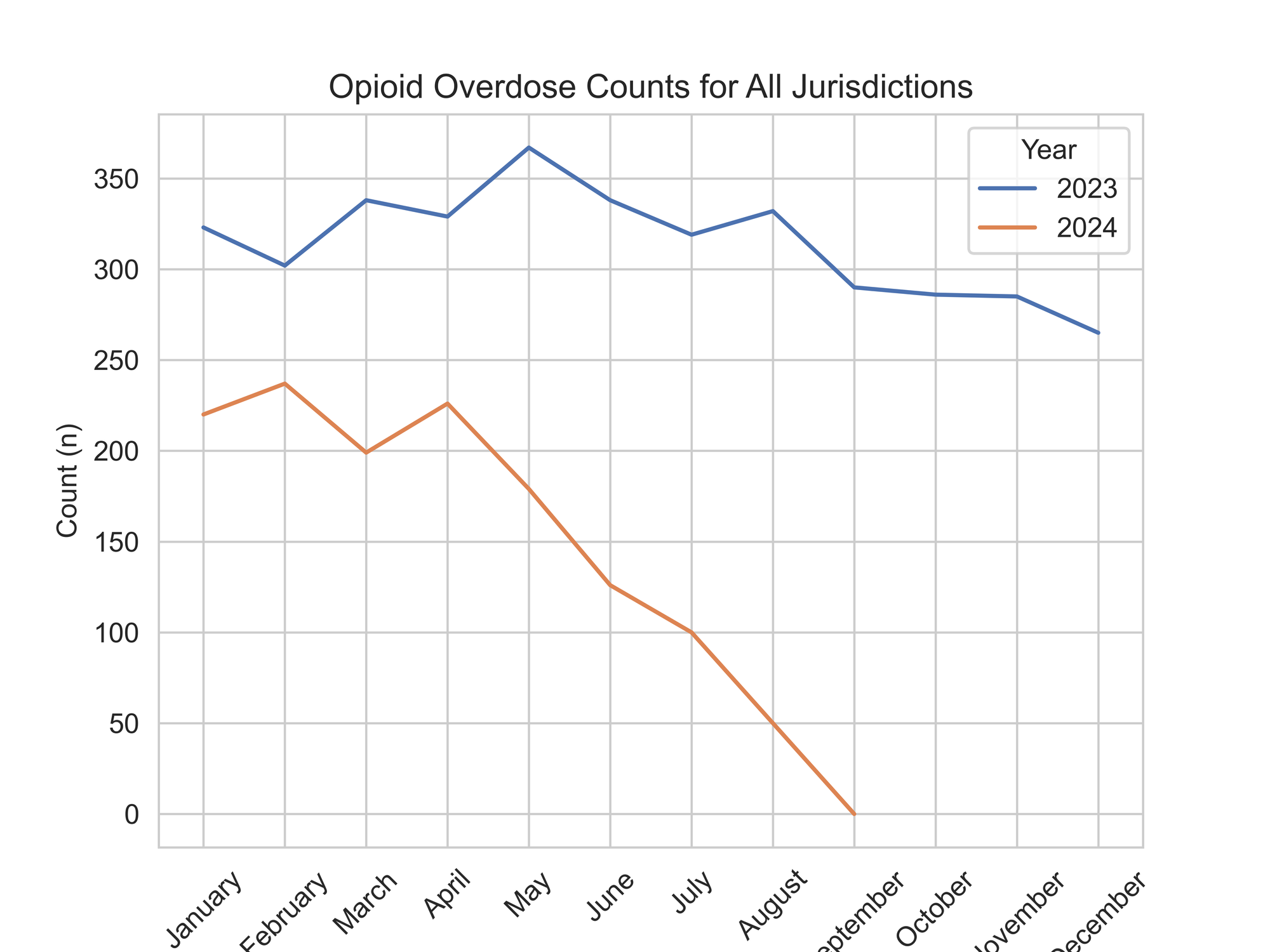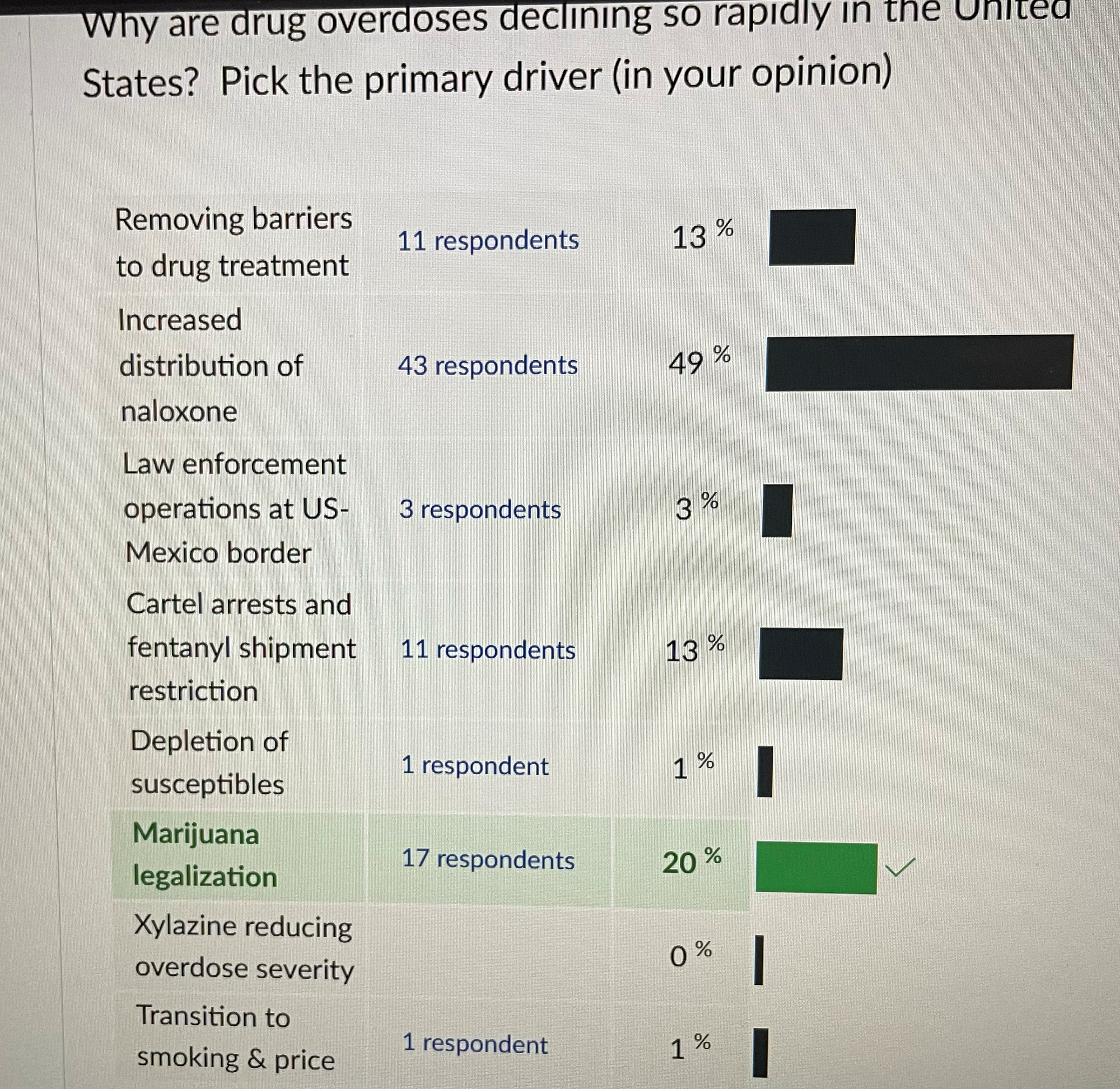
Reasons for the decline in drug overdoses: perspective from Kentucky's pharmacy students

by Chris Delcher, PhD
Director of the Institute for Pharmaceutical Outcomes & Policy (IPOP),
University of Kentucky
I warn the 2nd year pharmacy students taking my policy course that the world of drug policy can change quickly. In other words, expect the unexpected. That's exactly what happened this past week when news broke of the sharp declines in drug overdoses nationally and (adeptly) triangulated to the state and local levels by the Opioid Data Lab team. Their team's analysis even echoed recent conversations I had with an online group of forensic epidemiologists (the people working in medical examiner and coroner offices to get this data out there) organized by the Council for State and Territorial Epidemiologists. They were cross-validating observations showing declines in fatal fentanyl poisonings in each of their jurisdictions. The IPOP team weighed in on this conversation by providing the trends below from our repository of 5 additional jurisdictions with public data available on drug overdoses. The downturn from late 2023 to early 2024 is clear. Note: the Opioid Data Lab already warned of the lag time problem and cautioned against over-interpreting the later 2024 trend because cases are not finalized and added to the datasets.

The Opioid Data Lab team offered eight hypotheses for the downturn in drug overdoses:
- Removing barriers to drug treatment
- Increased distribution of naloxone
- Law enforcement operations at US-Mexico border
- Cartel arrests and fentanyl shipment restriction
- Depletion of susceptibles
- Marijuana legalization
- Xylazine reducing overdose severity
- Transition to smoking & price
We all know the true answer to this question: it is a mix of these interventions and that these aren't all the possibilities and I am always looking to poll my PharmD students to get the pharmacist's view of the world. Many of my students are working in Kentucky's pharmacies so they naturally have a patient-level perspective that I lack as an epidemiologist. So, the morning that the story broke (and I'm fairly certain they had no knowledge of the story prior to the poll), I asked them (n=93): Which of these hypotheses is the primary driver?

Their answers surprised me. Their training and the messaging that we provide at the University of Kentucky's College of Pharmacy around the value of naloxone for saving lives comes through in the poll (49% chose this one). This is good news for naloxone education in a state located in the historic epicenter of the opioid crisis. The next most frequent answer was marijuana legalization (20%). (Only medical cannabis is legal in Kentucky effective Jan. 1. 2025 in case you are wondering). This isn't a scientific analysis nor even a well-phrased survey question (medical versus recreational cannabis would have been a nice distinction for me to make) but I was a little surprised that "removal of barriers to drug treatment" fell behind in this crowd of future pharmacists. Are they seeing first-hand that barriers still exist in pharmacies? For example, our faculty reported that one of the medications for opioid use disorder, buprenorphine, was inaccessible to Medicaid recipients in up to 20% of pharmacies authorized to dispense it. Along those lines, I have written about the flattening of buprenorphine prescribing trends despite federal efforts to increase access. Maybe they are even starting to hear from patients that cross our border with Ohio about their experiences with recreational cannabis (Ohio just opened their first dispensaries on Aug. 6 2024). The poll will certainly spark several interesting class discussions in the weeks ahead.
One thing is clear from the poll: I have already made it a note to recruit the 1 respondent who answered "depletion of susceptibles" into our PhD program for their apparent epidemiologic know-how.
